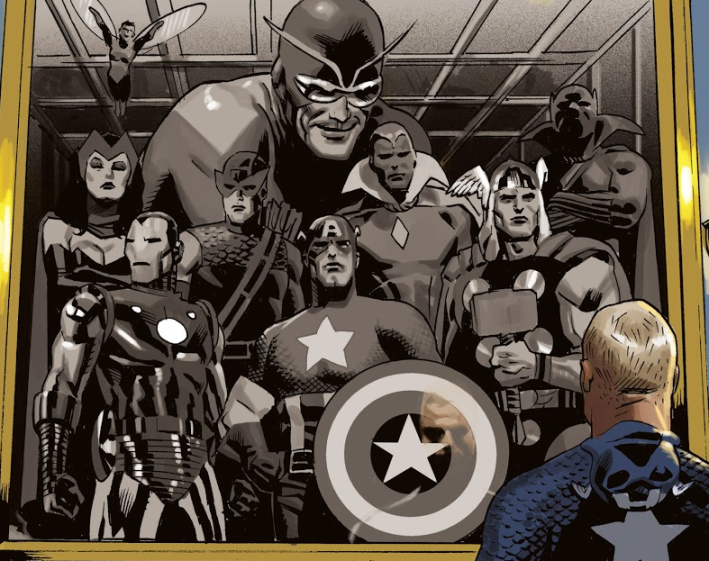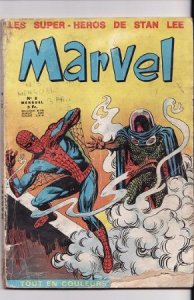In Avengers 19 (2010) a drawing shows a photo of the Avengers with Wasp, Goliath (Pym), Vision, Black Panther, Hawkeye, Thor, Cap, Iron Man and Scarlet Witch.
The lineup is from Avengers 58-59 except for Scarlet Witch, who was away with Toad and Quicksilver between #53 and #75. So is this a mistake or is there a way to make sense of this picture?
This is a period in Avengers history when Black Widow was around in a stressed relationship with Hawkeye. She was not an official member of the Avengers.
The photo must have been planned to commemorate the Vision’s induction (in #58). Maybe Black Widow couldn’t pose for the photo because she wasn’t a member so she used her espionage skills to dress as Scarlet Witch, a former member. This could have been her idea or someone else’s so that she could appear alongside them. Apart from the Wasp which is already there, the Scarlet Witch was the only past female member Natasha could impersonate. An intriguing proposition but are there clues that this interpretation is correct?
On the photo « Scarlet Witch » looks very stern and crosses her arms, keeping her distance from Hawkeye. His body language is less clear. In some way he turns his back to her, in another he turns his head toward her either to make eye contact or as a sad witness of her displeasure.
Further decoding the body language, we can see that Iron Man must have been the sticker for the rules who initially objected to have Natasha pose with them. Not only does he have his back to her at an angle as if to bodily obstruct the line of the camera but he clenches his fists and his head is turned away from his comrades in disagreement with his fellow Avengers who are looking at the camera.

